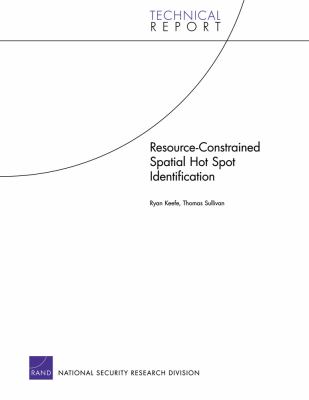
e-Book
|
Resource-constrained spatial hot spot identification
Copies
0 Total copies, 0 Copies are in,
0 Copies are out.
Title
Resource-constrained spatial hot spot identification
Call No
QA278
Digital Link
Authors
Subjects
Language
English
Published
Santa Monica, CA : RAND, 2011.
Publication Desc
1 online resource (xxiii, 66 p.) : ill. (some col.), col. maps.
ISBN
9780833051370
(pbk. : alk. paper)
Series









